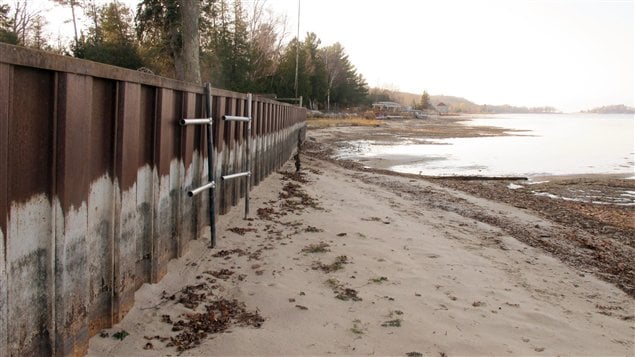The International Joint Commission recently recommended the installation of flexible structures that would help restore up to 25 centimetres of water to Lake Michigan and Lake Huron.
The IJC is the body established in 1909 to oversee trans-boundary water issues between Canada and the United States. The commission is particularly busy with issues relating to the condition and use of the continent’s Great Lakes. Cities such as Toronto and Chicago have renewed efforts to enhance their lake shores over the years.
For the last 15 years, however, water levels in the lakes have been declining. This past January, levels in Lakes Michigan and Huron, declined to record lows. Since the high point in 1997, residents on Georgian Bay, off Lake Huron, have watched levels fall by as much as two meters.
In an interview with the CBC earlier this year, Keith Kompoltowicz, watershed hydrology chief of the US Army Corps of Engineers, said, “We’re in an extreme situation.”
During public hearings on water levels, the IJC heard about the consequences of the receding water lines. The economic impact on shipping and tourism has been far-reaching. Cargo ships have to carry lighter loads, and the seasonal ferry service to popular island destinations, such as Manitoulin Island, is shortened as the ferries can no longer dock as early in the season. This week it was announced the Chi-cheemaun ferry between Tobemory and South Bay will be delayed by a week at least, as the current water level makes docking unsafe. Wetlands are drying up and cottagers and residents report a loss of sandy beaches and docks that were once in the water, now sit in grass,
The IJC has informed the Canadian and US governments of three changes. First the IJC will be implementing a new regulation plan to better respond to these record low water levels. Secondly, and most important for many people, the IJC is recommending the Canadian and US governments take on building a structure in the St. Clair river to better control the outflow from Lake Huron and Lake Michigan. A flexible structure would be able to control the outflow and eventually the hope is, restore the lakes to the levels recorded prior to the 1960’s when extensive dredging in the St. Clair River caused the upper lake levels to drop. The third step is to move to an adaptive management plan to stay on top of the situation with constant monitoring and data collection.
The rise and fall of lake levels is a natural occurrence but a drop this much and for this long is causing alarm. Less ice cover on the Great Lakes during the winter, below normal rainfall and snowfall, and increased evaporation due to higher temeperatures are all factors in this current ebb.







For reasons beyond our control, and for an undetermined period of time, our comment section is now closed. However, our social networks remain open to your contributions.